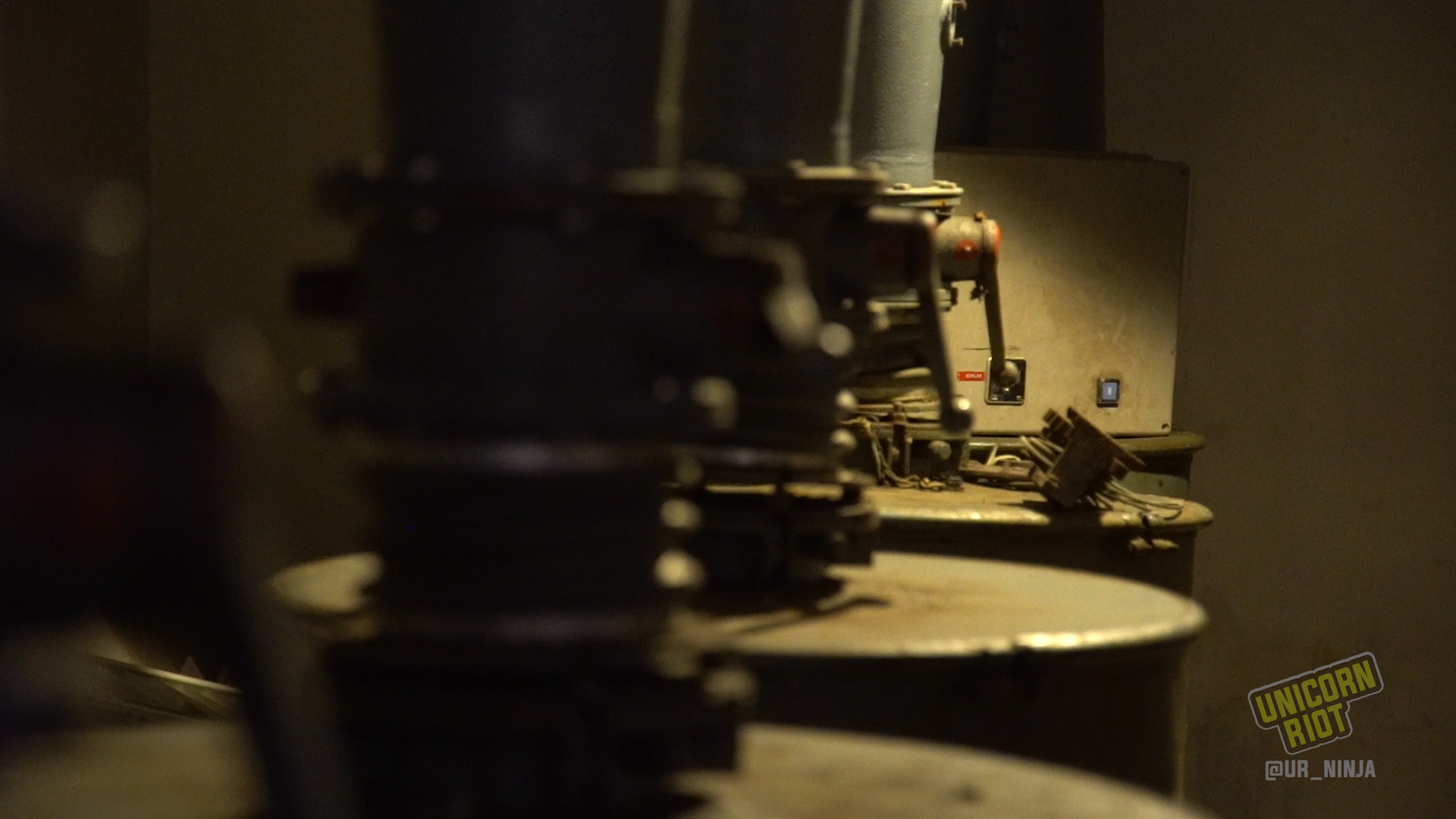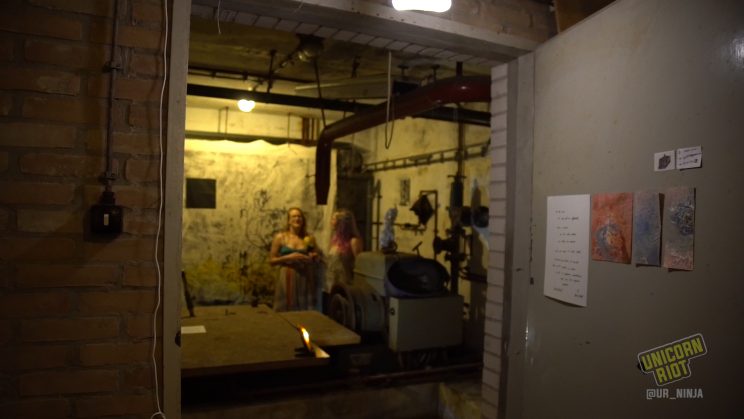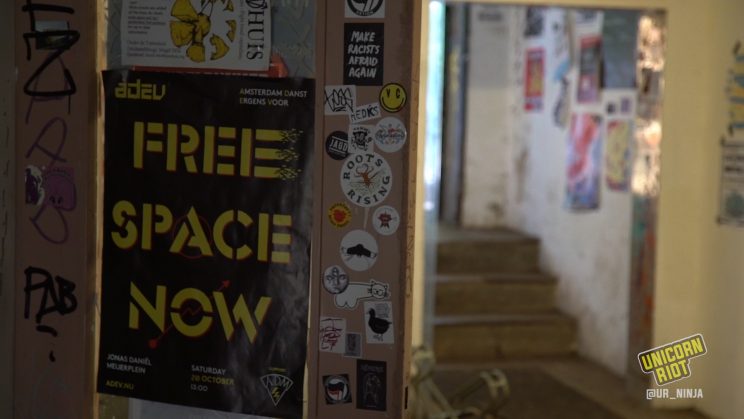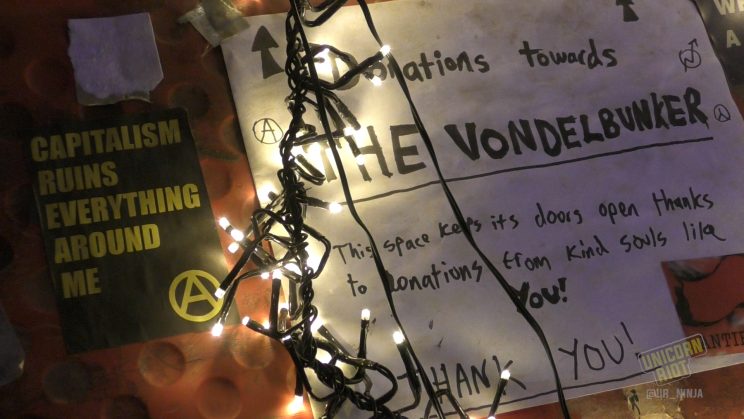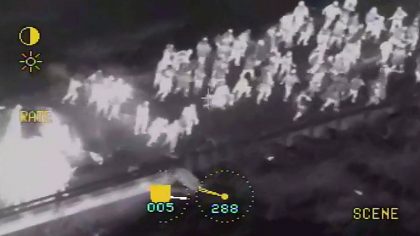The Anti-Fascist Nuclear Bunker Under Amsterdam You Didn’t Know Existed
Amsterdam, Netherlands – An old nuclear bunker, hidden underneath Vondelpark in the city center of Amsterdam, has been transformed into a shelter for independent culture.
In 2019, a collective of volunteers maintain the Vondelbunker as a meeting space to sustain and explore counter-culture activities. The bunker hosts a variety of events within its walls, from yoga, art shows and concerts, to film screenings, underground BDSM shows, and a “Kontra Bar” where visitors can enjoy a coffee and converse with the friendly staff. The bunker now also has a craft brewery called “Bunkerbier“, but don’t bother searching this fallout shelter for bottle caps because Bunkerbier uses aluminum pull tabs.
Vondelpark was completed in 1877 and originally charged an entrance fee to affluent members of society who wanted to take a stroll through the garden. At the time of its creation, Vondelpark was unpopular among the locals since the majority of Amsterdam was too poor to pay the fee.
It wasn’t until decades later, at the start of the cold war in 1947, that the nuclear shelter which now hosts the Vondelbunker autonomous space was built. The facility, located directly beneath Vondelpark, was developed as a nuclear fallout shelter for up to 2,600 locals to seek refuge in the event of nuclear war.
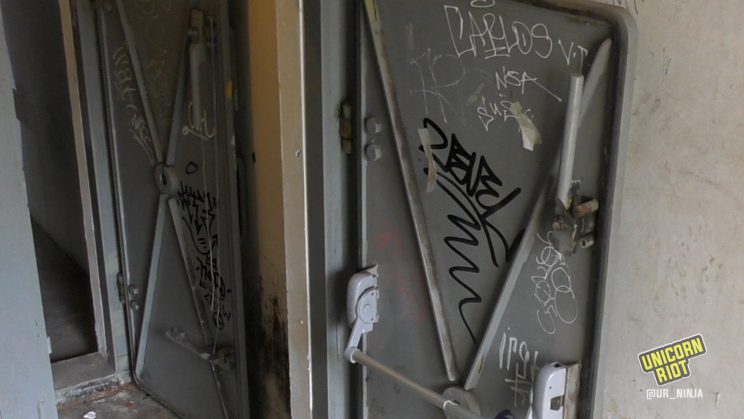
If you were one of the lucky ones to make it to a bunker and survive the initial phase of nuclear war, you then had only a few days before food ran out. According to Vondelbunker volunteers, if you hadn’t been rescued by the time the food supply ran out, survivors would then be forced to make difficult decisions in order to attempt to remain alive in a radioactive wasteland.
The bunker was eventually abandoned by the Dutch government and then appropriated by squatters. During the 1950s, it briefly functioned as a cafe where youth would dance and listen to rock and roll.
During the 60s, the bunker became a concert venue known as the “Beatkelder Lijn 3“, named after the Line 3 tram that runs through Vondelpark and over top of the bunker. Although the venue only lasted a year, it hosted many live shows including Pink Floyd.
Afterward, the space became known as Studio 7 until 1971 when the club closed down. In the 80s, the bunker was converted into a recording studio and practice room for musicians.
[Below: Psych Pop band Sammy Soul Set plays live at Line 3 in 1968]
“Because of the current political climate we think it is of extra importance to keep having a cultural center in downtown Amsterdam where profit is not the guideline.” – Vondelbunker
For decades, the bunker was also a space used by the Dutch squatters movement in Amsterdam. The Kraak Spreek Uur (aka “kraak“, meaning “squat” in Dutch) started sometime in the late 60s. Throughout the 60s and 70s, many people had difficulties finding housing, which led to a crisis and eventually locals took it upon themselves to begin squatting.
During its peak in the 1980s, which some refer to as “the squatter war“, it is estimated that some 20,000 people were squatting hundreds of abandoned spaces across the city of Amsterdam, including nuclear shelters like the Vondelbunker.
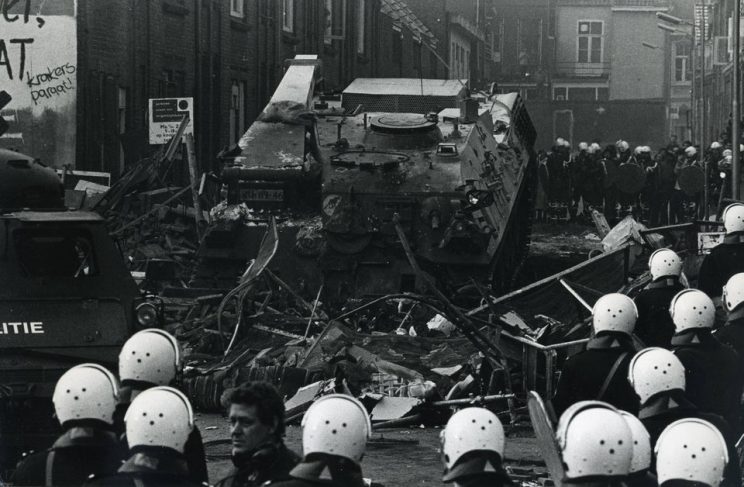
By 1997, ADM was one of the largest single squats known to have existed in the Netherlands. It was located in the Port of Amsterdam and was home to an estimated 100 people. For over a decade, squatting was legal in the Netherlands if a property had been empty for at least one year and the squat registered with police.
On October 1, 2010, the Dutch government abruptly changed course, announcing a new law which banned squatting, known as the “Kraken en Leegstand“. The government then began a campaign of gentrification across the city of Amsterdam, displacing artists, musicians, youth, and anyone unable to afford the rising cost of housing.
Since the squatting ban began, an estimated 350 squats have been evicted by police. Under the Kraken en Leegstand law, squatters now face up to one year in jail if they take over any abandoned building.
“Schijnheilig is a nomadic collective dedicated to claiming neglected spaces and transforming them into creative, freely accessible and non-commercial places.”
One of the collectives targeted was Schijnheilig, whose squat ‘Passeerdersgracht 23BG’ was located on a canal in the heart of Amsterdam’s central city. A violent police eviction of Schijnheilig led to the arrest of more than 150 people.
After the eviction of ‘Passeerdersgracht 23BG’, members of the Schijnheilig collective began organizing around the nuclear bunker underneath Vondelpark. In 2011, members of the collective opened the autonomous and anti-fascist cultural center known today as the Vondelbunker.
“We believe in the strength of the underground and in grassroots and DIY “ – Vondelbunker
If you can locate the entrance to the Vondelbunker, the space is free to access and use. The space operates on donations from its community of supporters which allows the volunteer collective to keep the bunker doors open.
Please consider a tax-deductible donation to help sustain our horizontally-organized, non-profit media organization:

